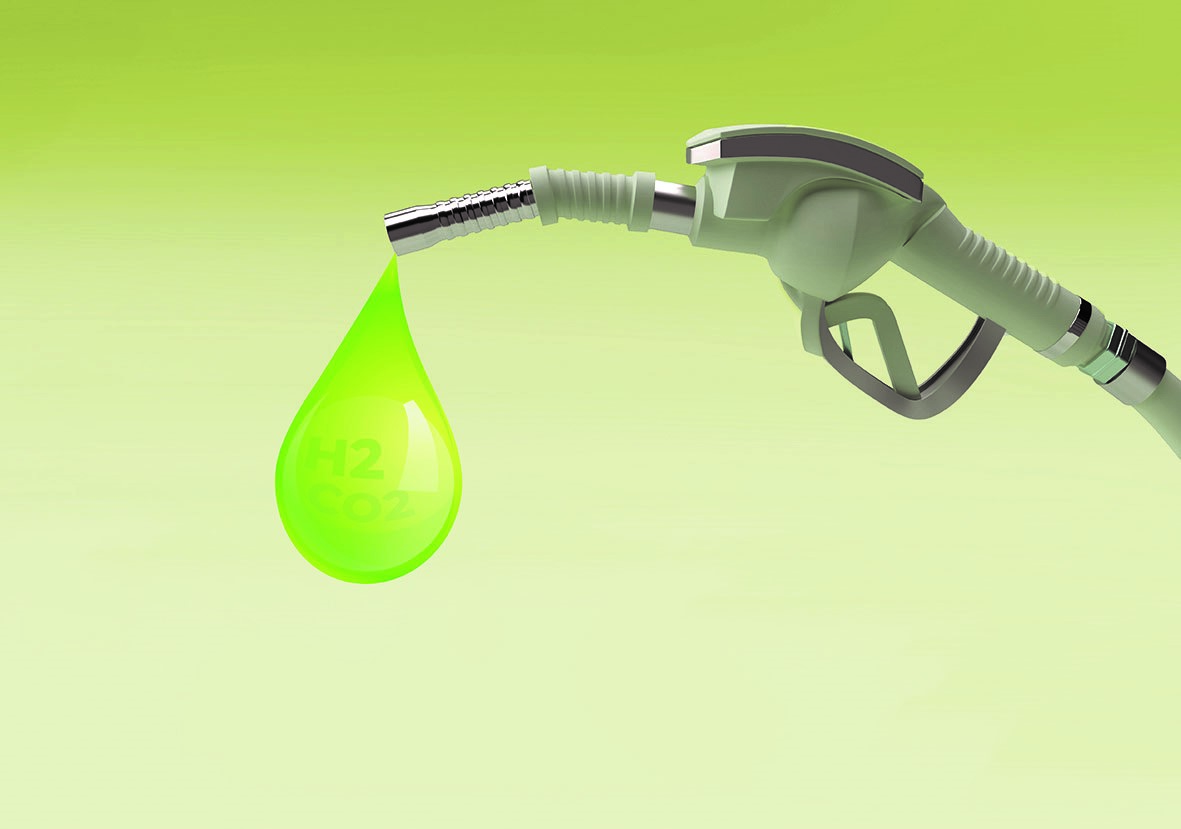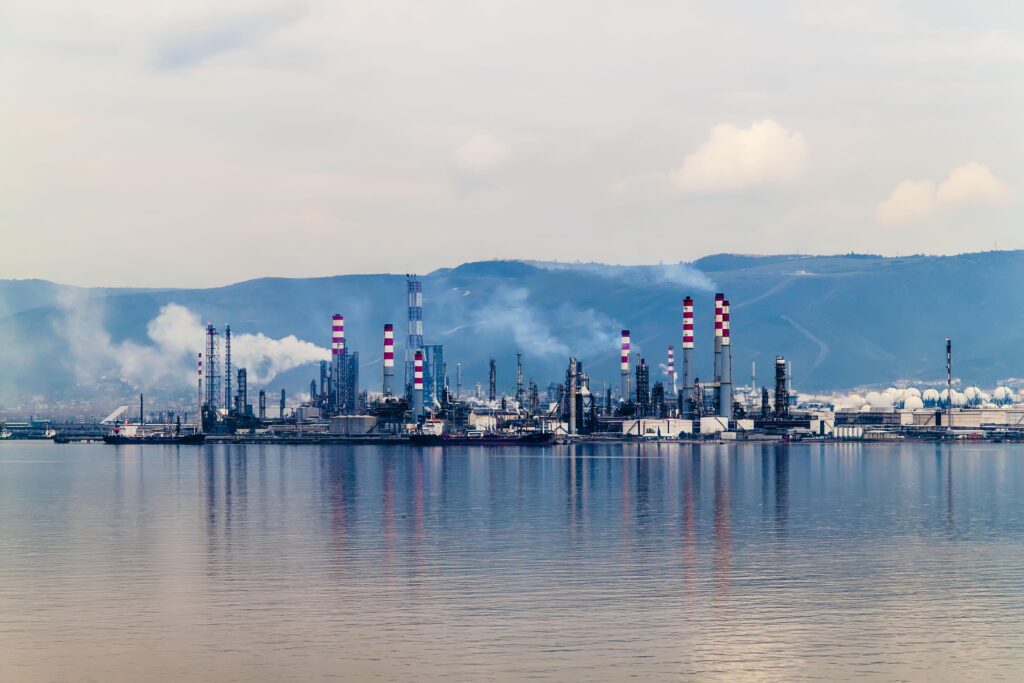Pressure has been mounting worldwide to drastically reduce harmful greenhouse gas emissions from automobiles, ocean freighters, airplanes and other modes of transportation. In Egypt, the government has focused on replacing vehicles more than 20 years old with new ones that use liquified natural gas (LNG) and attempting to build electric vehicles (EVs).
Experts see LNG as another polluting and finite fossil fuel, though significantly cleaner than petrol. Others say using electricity to power planes, trains, automobiles, and ships has a long way to go before having a substantial environmental impact; EVs, for example, require new infrastructure. Meanwhile, existing vehicles must be re-engineered or replaced with EVs. Heavy-duty commercial land transportation, ocean freighters, and planes can’t go electric yet, given how much power they need.
Lastly, EV batteries are made from lithium, manganese, cobalt, and nickel, all limited materials. David Castelvecchi, a senior physical sciences reporter at Nature, an environmental portal, noted that those minerals are “scarce, expensive or problematic” because extracting them carries “harsh environmental and social costs.”
Developing hydrogen fuel cells for vehicles also is complex. “The problem with hydrogen is that you don’t have any existing infrastructure,” Tobias Block of eFuel Alliance told Chemistry World, a monthly publication, in November. It is also “not easy to handle [hydrogen fuel, and] you can’t transport it over long distances.”
The shorter-term solution likely will be accelerating development of synthetic fuels (synfuels). They use chemically converted biomass, particularly carbon dioxide gas, coal and biological waste, to become near-zero emissions fuel composed of only carbon and hydrogen. It can be transported via existing infrastructure and used in today’s vehicles with no modification.
Nilay Shah, a co-founder of Zero Petroleum, which holds the Guinness World Record for flying the first aircraft powered by synthetic aviation fuel, stressed the long-term benefits of synthetic fuels. “I certainly see use using synthetic fuels up to about 2100,” he told Chemistry World in November. “It’s … an easy, useful and energy-dense fuel, and … very safe.”
Vehicle emissions
Transport remains a major contributor to harmful gas emissions, despite declining since the 1990s due to tougher tailpipe emission regulations in the EU, Japan and the United States. “Transport is responsible for more than two-thirds of all NOx emissions (chemistry shorthand for molecules containing one nitrogen and one or more oxygen atoms) and accounts for about 10% or more) of the total emissions of other pollutants,” noted the European Environment Agency in November. “Road transport, in particular, continues to account for a significant proportion of emissions of all the main air pollutants.”
According to research by Bosch, a German auto-parts manufacturer, to reach global climate pledges and targets, “CO2 emissions from traffic worldwide will have to be reduced 50% over the next four decades.”
The key to reaching that target, without spending time and money to develop new transport infrastructure, could be synfuels. “The secret lies in synthetic or carbon-neutral fuels, whose manufacturing process captures CO2 — thereby making a significant contribution to limiting global warming,” Bosch said. Using synfuels could save an estimated 2.8 gigatons of CO2 by 2050. “Carbon-neutral combustion engines that run on synthetic fuels are thus a very promising path to explore.”
The Bosch report also noted synfuels are a step beyond biofuels, which use agricultural crops to produce petrol or diesel. “Synthetic fuels do not mean a choice between fuel tank and dinner plate, as biofuels do,” the paper said. “And if renewable energy is used, synthetic fuels can be produced without the volume limitations that can be expected in the case of biofuels because of factors such as the amount of [arable] land available.”

Made from waste
Synfuels are created by converting coal or carbon dioxide, re-forming natural gas, or using plant or industrial waste (biomass) to create a mixture of carbon monoxide and hydrogen gas. James Speight, the author of the Synthetic Fuels Handbook published in 2008, said synfuels could also come from oil shale, tar sands, industrial waste, or any other product with carbon and hydrogen molecules. A Bosch report noted synfuels also could come from recycled resources, including water and harmful emissions.
The Energy Information Administration (EIA), a U.S. federal agency, calls such output “synthetic crude.” When burned, it produces near-zero harmful emissions, depending on combustion efficiency. Synfuels could be liquid or gaseous and used to power existing land, sea, or air vehicles with zero modifications.
Currently, South Africa is one of the biggest producers of synfuels. A facility in the Secunda region converts coal to liquid synfuel, while the factory in Mossel Bay uses natural gas. The EIA, in its country analysis brief published in August, noted: “South Africa’s synthetic fuels, which are derived from coal and natural gas, account for almost all of the country’s total liquid fuels production [between 2012 and 2021].” The country’s combined output from both regions is 205,000 barrels of synfuel a day.
Qatar is another country using synfuels produced from locally sourced natural gas. In 2009, Qatar Airways was the first carrier in the world to use artificial fuels on a commercial flight — a 50:50 blend of gas-to-liquid (GTL) synfuel and jet fuel. “GTL jet fuel has higher energy content by weight compared to conventional jet fuel. It also offers improved thermal stability, meaning engines would be able to run hotter,” noted a Qatar Airways statement at the time. “Both of these characteristics may lead to potential fuel economy and improved payload/range performance, which could result in a limited CO2 benefit for specific aircraft/route combinations.”
Another major player in the synfuel landscape is Malaysia. In December, a Malaysia Airlines flight used a 38% blend of synthetic fuel produced from used cooking oil mixed with conventional jet fuel. “Building on the momentum from our Net Zero Emissions commitment earlier this year, we are proud to have crossed the significant landmark of operating the first Malaysian flight using sustainable aviation fuel (SAF),” said Izham Ismail, Malaysia Aviation Group’s chief executive officer, during a press event. “Moving forward, we expect SAF to be a key component of our strategy to deliver a more sustainable travel experience for our customers.”
Also in December, the Malaysian government and Chinese state-owned Shanxi Construction Investment Group signed an MoU to produce synthetic, sustainable fuel, including biodiesel and aviation fuel. According to Biofuels International, a publication, the plant will use hydrogenated vegetable oil (HVO). “The HVO plant has the potential to produce SAF, which is also known commonly as bio-jet fuels,” the government told the media, adding that demand for HVO plants is rising, particularly in Europe. It estimates each plant could attract $712 million in foreign direct investment.
The U.S. focus is on biofuels, which rely on agricultural crops. As of 2017, the majority of U.S. filling stations sell gasoline that contains at least 10% ethanol. Those that sell pure petrol or diesel charge more for it and are rare to find. In August, Reuters reported the U.S. administration is looking to raise that to 15%. The primary aim is to reduce prices at the pump, which soared to all-time highs due to the Russia-Ukraine war.
On the other hand, the German Karlsruhe Institute of Technology and the Finnish Lappeenranta University of Technology partnered to build a facility that captures carbon dioxide from the atmosphere to convert it to synfuel. The institute noted in a press release, “the pilot plant has a production capacity of up to 80 liters of gasoline per day. In the first [phase], now completed, about 200 liters of fuel were produced … to study the optimum synthesis process, possibilities of using the heat produced and product properties.”

New opportunities
Egypt could benefit from promoting investment in synfuels, as high-profile international automakers and leading feeder companies are investing heavily in artificial fuels. Meanwhile, some academicians and researchers say synfuel is a more viable solution than EVs.
The most high-profile auto investor in synfuels is Porsche. The member of Volkswagen Group announced in April it would allocate $100 million for a 12.5% stake in Chile-based HIF Global, a company that produces carbon-neutral synthetic fuel, known as eFuel. The investment aligns with Porsche’s strategy to be carbon-neutral by 2030, including decarbonizing its supply and distribution chains.
The German automaker will work with HIF Global’s other partners, including ExxonMobil and Siemens Energy, to start producing eFuel from a pilot plant that uses wind energy and refine synfuels. The plan is to produce 13,000 liters of synfuel by the end of the year and increase it to 550 million annually by 2026. “The investment in eFuels could be seen as a hedge against an ongoing battery shortage due to the current global supply chain crunch,” noted Jaclyn Trop, an automotive reporter for Techcrunch, in an April article.
Lamborghini, an Italian automaker and member of Volkswagen Group, also focuses on synfuels. “We’re… keeping the door open for internal-combustion engines with synthetic fuel,” Lamborghini’s Asia Pacific Region Manager Francesco Scardaoni told Carscoops in August. His “ideal scenario” is to have electric models, most likely SUVs, running alongside Lamborghini’s core super-sports cars with internal combustion engines running on synfuel. Scardaoni stressed that would prove vital as the carmaker would “still have the pure DNA of super-sports cars.”
In July, Toyota, Subaru, Suzuki and Daihatsu, together with ENEOS Corp. and Toyota Tsusho Corp., announced a joint project to produce low-emission fuels dubbed the Research Association of Biomass Innovation for Next Generation Automobile Fuels.
The press release noted that “promoting technological research on the use of biomass” is among its core goals. The project also will develop efficient ways to produce bioethanol fuel using hydrogen, oxygen and CO2, and design, install and operate bioethanol production facilities.
In the meantime, Toyota runs a race car on 100% synfuel in the Japanese Super Taikyu series.
In June 2020, BMW announced a $12.5 million investment in synfuel startup Prometheus Fuels, which produces synthetic diesel and jet fuels. BMW sees it as a vital transition phase to reduce emissions, while EV sales grow to eventually become the most popular mode of transport. Greg Smithies, partner at BMW I Ventures, the company’s EV division, told the media, “The average car stays on the road for over eight years; meaning that even if the whole world switched to buying 100% electric cars tomorrow, it would still take almost a decade for today’s internal combustion engines to be off the road.”
Audi, a member of Volkswagen Group, also is “convinced of the potential” of synfuels in the short term. “Synthetic fuels are just a bridging technology for us,” Audi technical development chief Oliver Hoffmann told TopGear.com in March. He stressed the problem with synfuel is making it eco-friendly to produce.
Oil companies also are looking to develop synfuels. BP and Johnson Matthey, a chemicals company, have been working since 2018 on using sustainable biomass and raw material, including feedstock, in synfuels. That means using solid waste rather than relying on coal or natural gas. British Airways and Royal Dutch Shell, in collaboration with the University of Oxford, plan to build a synfuel facility in the U.K. by 2027 that could convert 500,000 tons of waste into 60 million liters of synfuel for jets and cars.
In the United States, Fulcrum BioEnergy is working with BP to build a synthetic crude refinery in Nevada capable of producing up to 50 million liters of refined synfuel for planes annually. It would consume 175,000 tons of solid waste annually, including textiles, wood, paper, residual plastic and packaging materials. “This is all the landfill fill,” James Paterson, principal chemist at BP, told Chemistry World in July. “[We’re] using that to make this ultra-clean synthetic fuel.”
Meanwhile, Genifuels, a U.S. company producing synthetic petroleum, is working on commercializing a method pioneered by the U.S. Department of Energy’s Pacific Northwest National Laboratory in the 1970s. “In a nutshell, the process works the same way that fossil fuels were formed,” James Oyler, Genifuel’s president, told Chemistry World in July. “It uses hot pressurized organic material, generally a waste material, to make renewable crude oil and … natural gas.”
He said the end product is nearly identical to fossil fuels, minus polluting elements emitted when ignited in conventional internal combustion engines. “It can be taken into existing refineries, in a very straightforward way, with processes that refiners are already familiar with,” said Oyler. “It’s also about 90% efficient in converting carbon from feedstock into fuel, with only 10% lost as carbon dioxide; a very good figure for [synfuel] production.”
Challenging fuel
The main hindrance to upscaling synfuels is the lack of technology that is efficient at using biomass. Oyler noted that “despite 7 or 8 billion people, there is only enough water waste sludge [which Genifuel uses] to produce at most 10% of the fuels [the world] uses.”
David Alexander, a professor at the Institute for Risk and Disaster Reduction at University College Logon, said in a research paper, “one-third to two-fifths of fuel content will be lost during conversion.”
Additionally, synfuels are expensive to produce, given the technology is still in its early stages of development. “Like anything, there is a barrier, and it’s expensive when it’s low volume,” said Ellen Stechel, senior sustainability scientist and deputy director of Arizona State University’s LightWorks department. “Look at photovoltaic 10 years ago.” According to the International Energy Agency, photovoltaic cell prices dropped from $100 in 2015 to about $30 in 2021.
The Bosch report noted the problem is mainly down to too few test plants worldwide. “A production ramp-up and favorable electricity prices could mean synthetic fuels become significantly cheaper,” the paper said. “Present studies suggest the fuel itself (excluding any excise duties) could cost between $1 and $1.40 per liter in the long run.”
To increase production, Bosch partnered with Indian corporations in 2017 to use algae that can produce up to 2,000 liters of bio-crude a day. They also agreed with AECOM, a company that builds sustainable infrastructure, to harvest harmful algae from waterways as an alternative feedstock.
Another challenge is choosing the correct feedstock and biomass to ensure their shortage doesn’t cause other environmental problems. That would be most evident when materials such as coal, natural gas, or recycled water.
Another consideration that could raise upfront investment costs is that new facilities must have enough space to accommodate potential diversification and add more feedstock streams. That is because the technology, science and economics related to biomass utilization change rapidly, requiring quick updates to the production process.
Government role
For Egypt and similar countries to capitalize on the potential of synfuels to power commercial vehicles, planes and, temporarily, passenger cars, governments must support that transition. In November 2021, Royal Society of Chemistry science writer Rachel Brazil stressed that “technologies that produce synthetic fuel have clearly arrived.”
To reduce the cost of such technologies, Block at eFuel Alliance noted the need for “some policy changes” by governments. The Alliance is currently campaigning to reduce taxes on synfuel, telling the Royal Society of Chemistry in November 2021 it is “one of the largest economic levers for [economic] development.”
Anna Krajinska of the Brussels-based cleaner transport campaign Transport & Environment told the Royal Society of Chemistry the other option is to tighten emission regulations on ships and airplanes. That would accelerate the development and investment in synfuels as an alternative to fossil fuels.
Accordingly, the Bosch report sees the future of transport as a mix of EVs and vehicles using synfuels: “The [green] hydrogen can be used for fuel cell vehicles or synthesized by additional conversion steps to synthetic … fuels for an increasing blend in the remaining gasoline and diesel fleet, not only for aviation … but also commercial and passenger vehicles,” the paper noted. By 2050, the report predicts, all vehicles will use synfuels or electricity. Egypt could have a significant opportunity to become a hub for synfuels. It is ahead of other MENA countries in developing eco-friendly green hydrogen projects, which would supply half of the components necessary to create synfuels. That negates the need to use recycled water to extract hydrogen. The missing part is finding sustainable sources of carbon. “The priority is increasing the amount of green hydrogen production and the roll-out of direct air capture [separating CO2 from the atmosphere] to enable production of full carbon-neutral fuels,” said Krajinska.







